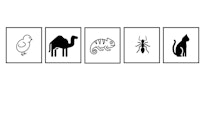The Iowa Assessments Exam (2025 Guide)
All products and services featured are independently selected by WikiJob. When you register or purchase through links on this page, we may earn a commission.
What Is the Iowa Assessments Exam?
The Iowa Assessments Exam is a standardized achievement test administered to school children from grades K to 12.This type of standardized test is a cognitive abilities test that assesses a student’s abilities and student performance.
It was first published in the 2011 school year by the University of Iowa and was designed to replace the Iowa Test of Basic Skills (ITBS test) and the Iowa Test of Educational Development.
However, the Iowa Assessments Exam is often used with the ITBS, alongside other cognitive tests such as the NNAT or CogAt, as part of the admissions process for gifted and talented programs.
Despite being created for Iowa, the exam is used in many states and private schools across the country.

What Is Tested on the Iowa Assessments?
As the Iowa Assessments Exam is an achievement test, it does not measure your child’s IQ or cognitive thinking. It merely assesses how much your child has learned in school.
The current grade of your child will determine which level of the exam they sit.
Some of the grades and levels overlap as they are taken at different points in the year. Your child’s teacher will know what exam they should sit.
| Level | Grade | Questions | Time Available |
|---|---|---|---|
| 5–6 | K–1 | 187 | 2 hours 10 minutes |
| 7 | 1–2 | 278 | 4 hours 10 minutes |
| 8 | 2 | 297 | 4 hours 10 minutes |
| 9 | 3 | 365 | 5 hours 40 minutes |
| 10 | 4 | 335 | 4 hours 55 minutes |
| 11 | 5 | 361 | 4 hours 55 minutes |
| 12 | 6 | 381 | 4 hours 55 minutes |
| 13–14 | 7–8 | 402–422 | 4 hours 55 minutes |
| 15–16 | 9–10 | 302 | 3 hours 55 minutes |
| 17–18 | 11–12 | 302 | 3 hours 55 minutes |
The assessment competencies are as follows:
- Listening – Following instructions, listening for extended periods
- Word analysis – Phonological awareness and decoding, identifying and analyzing words
- Computation – Computing with whole numbers
- Punctuation – Correct usage of punctuation
- Reading – Vocabulary, explicit and implicit meaning, key ideas, author’s craft
- Written expression – Grammar, sentence structure, planning and organization, appropriate expression
- Mathematics – Number sense and operations, algebraic patterns and connections, data analysis, statistics and probability, geometry, measurement
- Science – Life science, earth and space science, physical science
- Social sciences – History, geography, economics, civics and government
- Vocabulary – Understanding and use of correct vocabulary
- Spelling – Correct spellings
- Capitalization – Appropriate use of capitals
Word analysis and listening are for levels 9 and below only.
Levels 15 to 18 do not test:
- Spelling
- Capitalization
- Punctuation
Iowa Assessment Test - Example Questions (2025)
Iowa Assessments Level 5 to 6 – Listening
To your child:
“I am going to ask you a question while you look at these pictures. Listen carefully because I’m not allowed to say the question again. After I’ve said it, fill in the circle under the picture that answers my question.
“Julian was excited because his dog has just had four puppies. One of the puppies is brown, two are white and one is black.
”Which basket shows Julian’s puppies?”

Iowa Assessments Level 7 to 8 – Reading
To your child:
“The word is ‘sink’. When you brush your teeth, you do so at the sink. Indicate the word sink.”
Bath
Brush
Sink
Water
Iowa Assessments Level 7 – Math
From the pictures below, circle the picture that weighs the heaviest.

If you want 12-month access to all the practice resources for this test, our partner TestPrep-Online.com offers a Family Membership.
Family Membership gives you access to all the TestPrep-Online resources for the next 12 months. You will also get two separate accounts, which can be very helpful if you have two children preparing for their tests.
Get a Family Membership with 12-month access
Iowa Assessments Level 9 to 14 – Mathematics
Luke walks home from school. On his way home, he stops at the candy shop and at the library. If the candy shop is ten miles from school, and the library is three miles from the candy shop, and home is eight miles from the library, how many miles did Luke walk home altogether?
a) 8 miles
b) 10 miles
c) 21 miles
d) 18 miles
Iowa Assessments Level 15 to 18 – Social Studies
In what year was the US Bill of Rights written?
a) 1800
b) 1789
c) 1790
d) 1762
For the younger ages, the questions will be read aloud, and once only, but your child will still have to circle the correct answer.
As the levels progress, the questions will naturally get harder.
If your child can demonstrate that they can read, they will be expected to read out their own questions.
The correct answers are:
Listening: b)
Reading: Sink
Level 7 math: Camel
Level 9 math: c)
Social Studies: b)
Iowa Assessments Practice Test
Preparing for the Iowa Assessment Exam in 2025
The Iowa Assessment Exam was created to align with the updated Iowa Common Core Standards. Therefore, everything on the exam is a topic that has already been taught to your child in school.
To help prepare your child for these tests:
-
Speak to your child’s teacher. No one knows your child’s learning habits better than their teacher. Ask them what areas your child needs extra help with and what areas they are comfortable with. Dedicate more time in your practice schedule for the topics that need more work.
-
Invest in study packs and practice tests. Begin practicing with no time limit and revision notes, eventually building up to timed papers and no study aids. Using a study guide and test materials will improve student progress.
-
Make sure your child is well-rested, getting plenty of exercise and eating healthily. These are all factors that influence your child’s memory, concentration and learning capabilities.
Typically, the most common grade for this test is Grade 3 (level 9). It is also the level that has the most sub-tests.
For those of you with Grade 3 children sitting this exam, or younger, the biggest challenge is concentration. To help your child concentrate better, try these tips:
- Make practice sessions fun. Try recreating test topics using toys or turn it into a game. Praising your child after every correct answer will encourage their participation. The more fun and rewarding your child finds something, the more they engage.
- Explain everything. Explain to them that they need to take a test and how they need to behave during it. When they answer incorrectly, explain to them why that’s the wrong answer, and what the correct one is.
- Begin together. Start your practice session by working through everything together, and slowly make the sessions more independent.
- Make the assessed subjects part of everyday conversation. For example, civics is part of the social studies exam. Talk to your child about how to be a good citizen and some basic laws of the land. Ask your child about the weather or if they understand what they are doing when they push or pull something.
The older children taking the test should already have some familiarity surrounding tests and test conditions.
- Make sure they do their homework. This ensures that no subjects are being missed or misunderstood. The test criteria is everything learned in the classroom, so homework is essential.
- Get your child to read every night. Reading will help with their concentration and learning levels, as well as significantly improve their vocabulary and written expression. If possible, try to find books that center around subjects your child will be assessed on in the social studies or science papers.
How the test is administered varies between institutes. Some may have your child complete all the tests in one sitting. Others may spread the tests throughout the week.
Iowa Assessment Test Scores
Your child will be issued several scores.
First, the Standard Score (SS) or National Standard Score (NSS).
Your child’s raw score is converted to a SS that ranges from 80 to 400. This number is then ranked as either:
- Non-Proficient (NP)
- Proficient (P)
- Advanced (A)
The full breakdown for each test and ranks can be found on the official website.
For Grade 8, a proficient rank sits between 230 and 310.
Second, the Grade Equivalent (GE) shows what level your child is performing at. It ranges from K to 13+.
If your child is in Grade 3 and sits the test towards the end of the year, then this score will look like 3.7;
‘3’ represents the grade and ‘.7’ represents the number of months in that particular grade.
Third, the National Percentile Rank (NPR).
This is calculated by finding the average score per grade for all the students taking the test that term. A score in the 70th percentile indicates that your child performed 70% better than their peers.
Iowa Assessments Practice Test
Final Thoughts
As the Iowa Assessments Exam is often combined with others, it is advised that you speak with your child’s teacher to fully understand how this test is going to be used.
Some schools may use the Iowa Assessments Exam on its own to see how their students are learning and developing. While some schools may use this exam alongside others to identify gifted and talented children.
As a standalone test, the Iowa Assessments Exam follows the curriculum of the state. This means that as long as your child is doing their homework and achieving good grades in school, the test will not be difficult.
If the Iowa Assessments Exam is being combined with the ITBS or other tests, ask your child’s teacher for further information on what subjects you should pay more attention to at home and the preparation methods that will benefit your child.





